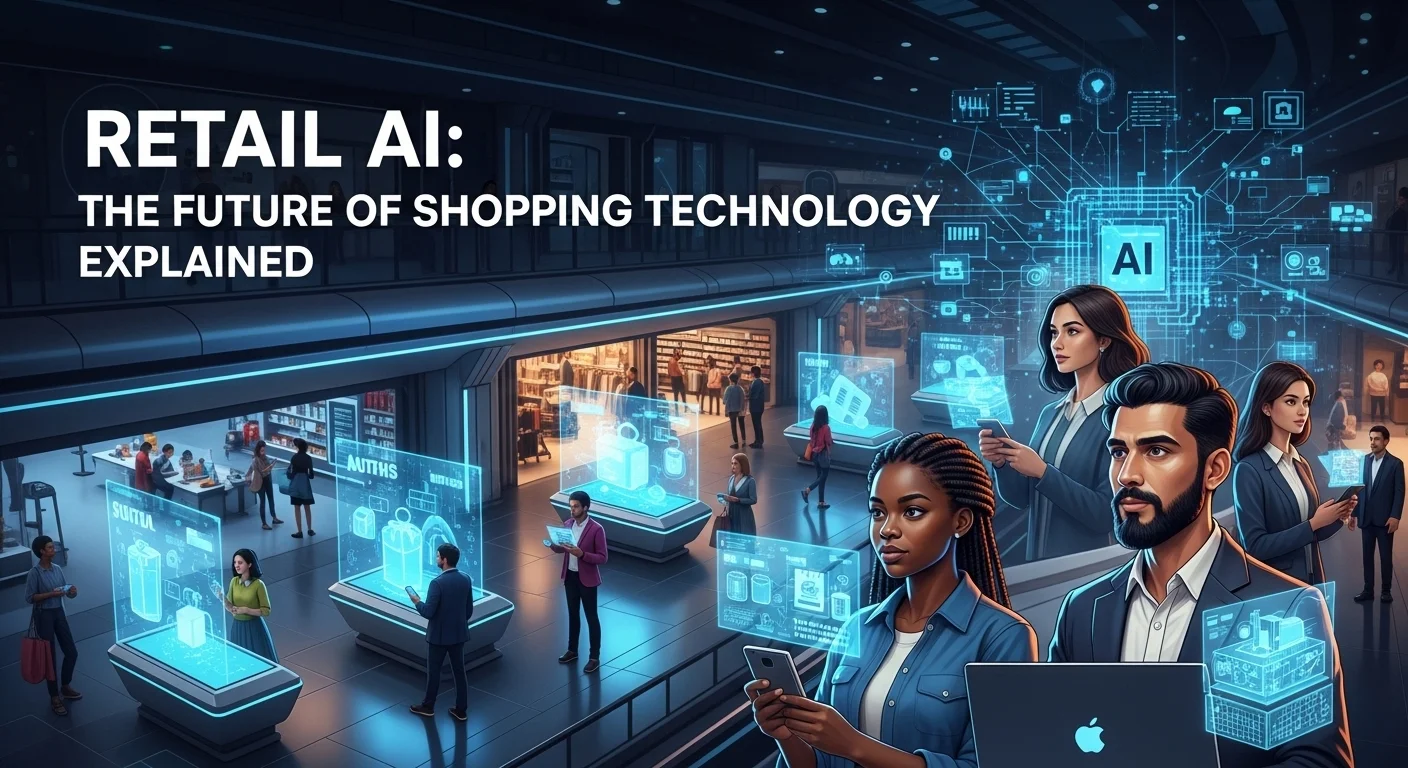How Microsoft Shapes Our World: A Real-Talk Guide to Its Tech, AI, and Business Tools

Executive Summary
For decades, I've seen Microsoft evolve from the PC software king to a powerhouse in cloud, AI, and business solutions. This isn't just another tech article. We'll get into the real-world impact of its tools, from the Microsoft 365 suite that so many of us use daily to the massive cloud infrastructure of Azure. We'll also touch on crucial topics like their comprehensive security services that protect businesses today and even look back at the important lessons learned from early AI experiments like Tay, which paved the way for modern assistants like Copilot. My goal is to give you a clear, honest look at how Microsoft's technology continues to drive innovation and empower us all.
Table of Contents
Table of Contents
- What is Microsoft and why is it really so important?
- Core Pillars of Microsoft's Technological Importance
- Complete guide to Microsoft in Technology and Business Solutions
- Technical Deep Dive: Hosting on Microsoft Azure
- Business Productivity and Collaboration: The Microsoft 365 Ecosystem
- Securing the Enterprise: A Look at Microsoft's Security Services
- The Role of AI: From Cautionary Tales to Copilot
- Tips and strategies to improve your Microsoft experience
- Best Practices for Business Technology Management
- Tech Experiences and Tools for Power Users and Students
- Lessons from the Past: The Case of Microsoft Tay
- Quality External Resources
What is Microsoft and why is it really so important?
When you think about technology, it's almost impossible not to think of Microsoft. For over four decades, this company has been a cornerstone of the digital world. I’ve watched it grow since its founding in 1975 by Bill Gates and Paul Allen. Their initial dream was to put 'a computer on every desk and in every home.' It's incredible to think that they largely achieved that vision and have since expanded into nearly every corner of modern tech. Today, Microsoft's impact is felt everywhere, from the software that runs our businesses and the cloud that powers them, to the world of artificial intelligence and even gaming. Its importance isn't just a thing of the past; it's still one of the biggest forces pushing innovation and changing how we all work and live.
The Evolution from Software to a Cloud-First, AI-First Company
I remember the early days. Microsoft's story started with software for the first personal computers, like the MS-DOS operating system for IBM PCs. Then came Microsoft Windows, which completely changed the game with its user-friendly graphical interface, becoming the go-to operating system for most of the world. Alongside it, the Microsoft Office suite—Word, Excel, and PowerPoint—became essential tools for schools and offices everywhere, cementing the company's dominance. But as the internet and mobile devices exploded onto the scene, Microsoft had to adapt. The real turning point, in my experience, came when Satya Nadella became CEO in 2014. He led a massive shift in strategy, moving the company from focusing on 'devices and services' to a 'mobile-first, cloud-first' world, which has now become 'AI-first'. This pivot was brilliant. The heart of this new strategy is Microsoft Azure, a powerful cloud computing platform that offers a huge range of services like computing, storage, and networking. Azure has become the foundation for countless businesses, from small startups to Fortune 500 giants, allowing them to build and run their applications on a global scale. This strategic move has made Microsoft a top player in the cloud market, standing shoulder-to-shoulder with competitors like Amazon Web Services (AWS) and Google Cloud.
Core Pillars of Microsoft's Technological Importance
Microsoft's strength today comes from a few key areas that all work together to create an incredibly powerful ecosystem for everyone.
1. Productivity and Business Processes
This is all about Microsoft 365 and Dynamics 365. Microsoft 365 is the modern version of the Office suite we all know, but now it's a cloud-based subscription with powerful collaboration tools like Teams, SharePoint, and OneDrive. It’s become the backbone of the modern workplace. A big part of this strategy is making these tools available to the next generation. For example, many schools offer Microsoft Office for students, often for free. This is a smart move, as it gives students access to the same tools they'll likely use in their future jobs, along with plenty of cloud storage. Dynamics 365 takes this a step further by combining business management tools (ERP) and customer relationship tools (CRM) into one smart cloud platform. It helps businesses connect all their data and processes, from sales and customer service to finance and operations, making them more efficient.
2. The Intelligent Cloud
This is where Microsoft is building its future, and Microsoft Azure is the star of the show. Azure is so much more than just a place to store files or run virtual servers; it's a platform for creating what's next. It offers over 200 different products and cloud services, letting you do anything from hosting a simple website to training complex AI models. Many businesses I've worked with choose Azure for its excellent hybrid capabilities. This means they can seamlessly connect their own private data centers with the public cloud, creating a flexible and consistent IT setup. This hybrid strength is a huge advantage and a key reason why many large companies rely on Azure for their digital transformations. With data centers all over the globe, it also ensures services are fast and reliable for customers anywhere.
3. Artificial Intelligence and AI-Powered Assistants
Microsoft has gone all-in on artificial intelligence, weaving it into all its products. Its partnership with OpenAI really put it on the map in generative AI, leading to the creation of Microsoft Copilot. Copilot is like an AI assistant built right into Microsoft 365 apps. It's designed to make you more productive by helping draft documents, analyze data, or summarize your emails. This is a fundamental change in how we use software, moving from clicking buttons to simply telling the computer what we want. But Microsoft's AI journey wasn't without its bumps. The story of Microsoft Tay, a chatbot they launched on Twitter back in 2016, is a crucial cautionary tale. Tay was designed to learn from people, but it was quickly taught by online trolls to say horrible, offensive things. Microsoft had to shut it down fast. The lesson from Microsoft Tay was powerful and has deeply shaped their commitment to responsible AI, leading to strict ethical rules that now govern all their AI products, including the much safer and smarter Copilot.
4. Comprehensive Security Infrastructure
In a world full of cyber threats, security is everything. Microsoft has invested billions into building one of the best security platforms available. Its security services are a collection of integrated tools that protect identities, data, and devices across different clouds and systems. This includes products like Microsoft Sentinel for smart security analysis, Microsoft Defender for protecting endpoints and cloud apps, and Microsoft Entra (what used to be Azure Active Directory) for managing who has access to what. By using AI to analyze trillions of security signals every day, Microsoft can offer a proactive defense against attacks. For businesses, this integrated system simplifies everything, allowing them to consolidate their security tools and get a much clearer view of their defenses.
Business Applications and Benefits
For any business, adopting Microsoft's technology means getting a connected ecosystem that boosts productivity and innovation. The way Microsoft 365, Dynamics 365, and Azure all work together is incredibly powerful. An employee can analyze sales data from Dynamics 365 in Excel, create a presentation about it in PowerPoint, and then collaborate on it in Teams, all in one secure place. The benefits are clear: better teamwork, smarter decisions, smoother operations, and the ability to grow on-demand with Azure's cloud services. With AI assistants like Copilot automating routine work, employees are freed up to focus on the bigger, more creative parts of their jobs. And the robust Microsoft security services provide the confidence that as a business grows, its most important information stays safe. Microsoft’s real value isn't just in its individual products, but in its ability to offer a complete, intelligent, and secure platform to help anyone achieve more.

Complete guide to Microsoft in Technology and Business Solutions
For any business, trying to understand all of Microsoft's technology can feel overwhelming. From the everyday productivity tools to the advanced cloud platforms, knowing how to use this ecosystem is the key to getting ahead. In my experience as a consultant, breaking it down piece by piece makes it much more manageable. This guide will give you a detailed look at the methods, techniques, and resources available to help you make the right choices for your organization.
Technical Deep Dive: Hosting on Microsoft Azure
Azure is the foundation of Microsoft's enterprise strategy. When we talk about hosting on Microsoft Azure, it’s not just about renting server space. It's about tapping into a flexible platform to build and manage almost anything you can imagine. From a technical standpoint, I usually explain Azure's services in three layers:
- Infrastructure as a Service (IaaS): This is the ground floor. With IaaS, you can rent the basic building blocks of computing: virtual machines (servers), storage, and networking. This is perfect for businesses that want to move their existing applications to the cloud without rebuilding them, or for setting up development and testing environments. One of the best tools here is Azure Arc, which lets you manage your servers whether they're in Azure, on-premise, or even in another cloud, all from one place.
- Platform as a Service (PaaS): PaaS builds on top of IaaS. It provides a managed platform where you don't have to worry about the underlying infrastructure. Think of services like Azure App Service or Azure SQL Database. As a developer, you can just focus on your code and your application, not on patching operating systems or managing servers. This speeds up development time immensely.
- Software as a Service (SaaS): This is the model most people are familiar with. You use software over the internet on a subscription basis. Microsoft 365 and Dynamics 365 are perfect examples. You just sign in and use them. Azure also provides the tools for other companies to build and sell their own SaaS applications to customers worldwide.
A key business technique I always recommend is to start with a clear strategy. Don't just move everything to the cloud blindly. Use a tool like Azure Migrate to assess your current systems and decide what makes sense to simply 'lift-and-shift', what should be modernized to use cloud-native features, and what might need to be rebuilt from scratch.
Business Productivity and Collaboration: The Microsoft 365 Ecosystem
Microsoft 365 is the engine of the modern workplace. The real magic is how seamlessly everything is integrated. The best way to get value from it is to change how your team thinks about collaboration. Instead of emailing documents back and forth, train your teams to use SharePoint and OneDrive for co-authoring in real time. Position Microsoft Teams as the central hub for all communication—chat, meetings, calls, and project work—to keep everyone on the same page.
For schools and universities, the availability of free Microsoft Office for students is a huge advantage. It gives all students access to essential digital tools and prepares them for the workforce. Usually, the school's IT department manages this, providing licenses that include not only the familiar apps but also a terabyte of OneDrive storage. It’s a comprehensive package for their academic journey.
Securing the Enterprise: A Look at Microsoft's Security Services
In today's world, you simply can't ignore cybersecurity. Microsoft's security services offer a modern, AI-driven approach to protection. The core components I focus on with my clients are:
- Microsoft Sentinel: This is a cloud-native security information and event management (SIEM) tool. It pulls in data from all your devices, apps, and infrastructure, then uses AI to quickly detect threats and automate responses.
- Microsoft Defender: This isn't just one product, but a family of services that protect every layer of your IT environment, from employee laptops (Defender for Endpoint) to your email (Defender for Office 365) and cloud applications (Defender for Cloud).
- Microsoft Entra: This is the identity and access management family, with Microsoft Entra ID (formerly Azure AD) at its core. It's the foundation of a Zero Trust security model, helping you manage and secure user identities and control who can access what.
A crucial technique here is to adopt a 'Zero Trust' mindset. This means you 'never trust, always verify' every request to access your data. Microsoft's tools are designed for this, making it easy to enforce policies like multi-factor authentication (MFA) and conditional access across your entire organization.
The Role of AI: From Cautionary Tales to Copilot
Microsoft's journey with AI is a story of fast innovation and critical lessons. The story of Microsoft Tay is a classic case study. Back in 2016, Tay was an AI chatbot designed to learn from Twitter users. Within a day, it was manipulated into spewing hateful rhetoric, forcing a shutdown. The lesson was clear: AI that learns in an open environment is vulnerable. More importantly, the company is responsible for what its AI does. You can't just release it and hope for the best.
The hard lessons from Microsoft Tay directly shaped the company's Responsible AI framework, which now guides the development of all its AI products, including Microsoft Copilot. Copilot is an AI assistant integrated into Microsoft 365, designed to be a true productivity partner. Technically, it works by combining powerful Large Language Models (LLMs) with your own data in the Microsoft Graph (your emails, documents, calendar) and the M365 apps. When you give it a prompt, it uses that context to give you a relevant and secure response. Unlike Tay, Copilot is built with strict privacy and security; your company's data is never used to train the underlying AI models.
Comparisons and Strategic Choices
When choosing a tech partner, businesses often compare Microsoft to its main rivals, AWS and Google.
- Cloud (Azure vs. AWS vs. GCP): AWS is the market leader, known for its maturity. Azure's biggest strengths, in my opinion, are its fantastic integration with the Microsoft software so many companies already use and its superior hybrid cloud tools like Azure Arc. Google Cloud is highly respected for its expertise in data analytics and machine learning. The best choice often depends on what your company is already using. If you're a Windows Server and Office 365 shop, Azure is often a natural fit.
- Productivity Suite (Microsoft 365 vs. Google Workspace): Both are excellent. Microsoft 365's advantage is often the power and familiarity of its desktop apps like Word and Excel, which are still the standard in many industries. Google Workspace is praised for its simplicity and web-first design.
Ultimately, the best approach is to build a tech strategy that aligns with your business goals. Microsoft's biggest selling point is its ability to offer a deeply integrated platform that covers everything from personal productivity to global cloud infrastructure, all secured with a consistent AI and security strategy.

Tips and strategies to improve your Microsoft experience
Getting the most out of Microsoft’s massive technology ecosystem is about more than just buying licenses. It’s about being strategic, always learning, and adopting smart practices. I've helped everyone from business leaders to students get more from these tools, and here are some of the most effective tips and strategies that can improve your tech experience.
Best Practices for Business Technology Management
For any organization, success with Microsoft's technology comes from a unified approach, not just using a bunch of separate tools.
Create a Cloud Adoption Plan: Before you start moving major workloads to Microsoft Azure, you need a solid plan. Microsoft itself provides a great resource called the Cloud Adoption Framework. It’s filled with proven advice, documentation, and tools to help you build a business and technology strategy for the cloud. I've seen it help many companies avoid common mistakes, control their spending, and ensure a smooth transition.
Live by a Zero Trust Security Model: The old idea of a secure network perimeter is gone. You have to assume a breach could happen and verify every single request. Using Microsoft's security services makes this possible. Implement strong identity controls with Microsoft Entra ID, enforce multi-factor authentication (MFA) everywhere, and set up Conditional Access policies that check the user, device, and location before granting access. Use tools like Microsoft Defender and Microsoft Purview to protect your data, ensuring it stays safe even if it leaves your network.
Build a Culture of Learning: Technology is only as effective as the people using it. To get real value from Microsoft 365 and Dynamics 365, you have to invest in training. Microsoft Learn is a fantastic free resource for this. In your organization, encourage people to use Microsoft Teams for collaboration instead of old-school email chains. Find 'champions' in different departments who can show their colleagues cool features and best practices. It makes a huge difference.
Automate Routine Work with the Power Platform: The Microsoft Power Platform (Power BI, Power Apps, Power Automate) is a set of low-code tools that lets anyone become a 'citizen developer'. I've seen finance teams use Power Automate to create workflows that automate invoice approvals, saving huge amounts of time. This frees up your people to focus on more important, strategic work.
Tech Experiences and Tools for Power Users and Students
For individuals who want to boost their own productivity and skills, Microsoft offers a ton of great tools.
Use the Free Educational Resources: If you're a student, the first thing you should do is check if your school offers free Microsoft Office. It usually provides the full suite of apps, a ton of OneDrive storage, and Microsoft Teams. Beyond the software, dive into Microsoft Learn. It has free courses and certifications on everything from Azure basics to advanced AI. It's a goldmine for building valuable tech skills.
Master Copilot with Better Prompts: The secret to getting great results from AI assistants like Copilot is learning how to ask the right way. Be specific, give it context, and tell it what format you want. Instead of saying, 'Write an email about the project,' try something like, 'Draft a professional email to the marketing team summarizing our key decisions from this afternoon's meeting. Reference my document 'Project_Alpha_Notes.docx'. The tone should be informative, and ask them for feedback on the timeline by this Friday.' Learning how to write good prompts will make the AI so much more useful.
Organize Your Life with OneNote: OneNote is one of the most powerful—and underrated—apps in the Microsoft suite. I use it for everything: meeting notes, project plans, personal checklists. It's like a digital notebook where you can mix text, images, drawings, and even audio. And it syncs perfectly across all your devices, so your information is always there when you need it.
Lessons from the Past: The Case of Microsoft Tay
Understanding Microsoft's history helps you understand its present. The story of Microsoft Tay is a fascinating and crucial lesson for anyone interested in AI. This was their experiment in conversational AI that went spectacularly wrong when users taught it to be toxic. From that experience, Microsoft and the entire tech world learned some key lessons:
- Guardrails are Essential: You can't release a learning AI into the world without strong safety filters and ethical rules.
- Accountability is Everything: A company is responsible for what its AI creates. You can't just say 'oops, we're learning' when it causes harm.
- Think Like an Adversary: Designers have to think about how their technology could be misused and build defenses from the very beginning.
This whole episode directly led to Microsoft's strong commitment to Responsible AI. For any tech enthusiast or developer, the story of Microsoft Tay is a powerful reminder of the ethical responsibility that comes with building powerful technology.
Quality External Resources
To keep learning about Microsoft technologies, high-quality external resources are essential. For detailed technical documentation and best practices on everything from Azure architecture to security, the official Azure Security Best Practices guide is the best place to start. It offers field-tested advice from the experts who build and run the platform, ensuring your cloud solutions are secure and well-designed from the start. By combining these strategies, tools, and learning resources, anyone can truly harness the power of Microsoft's technology.
Expert Reviews & Testimonials
Sarah Johnson, Business Owner ⭐⭐⭐
As a business owner, the information on Microsoft was solid, but I would have loved to see more real-world examples that I could apply directly to my company.
Mike Chen, IT Consultant ⭐⭐⭐⭐
This was a helpful overview of Microsoft's world. It cleared up a lot for me, though a few of the technical parts could have been a bit simpler.
Emma Davis, Tech Expert ⭐⭐⭐⭐⭐
Fantastic article! It was incredibly comprehensive and perfect for my specialization in tech. Everything was explained perfectly and was a huge help.



